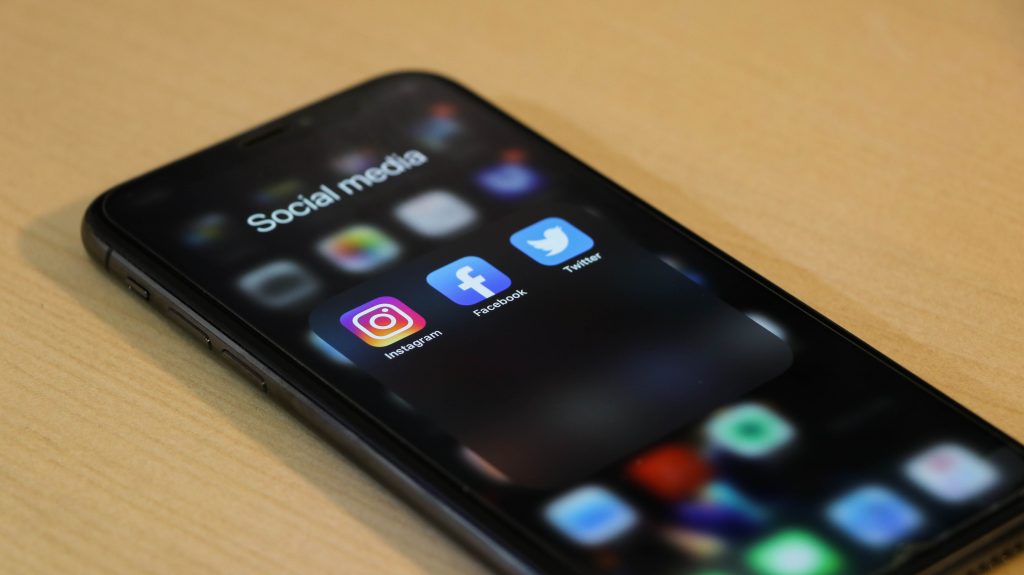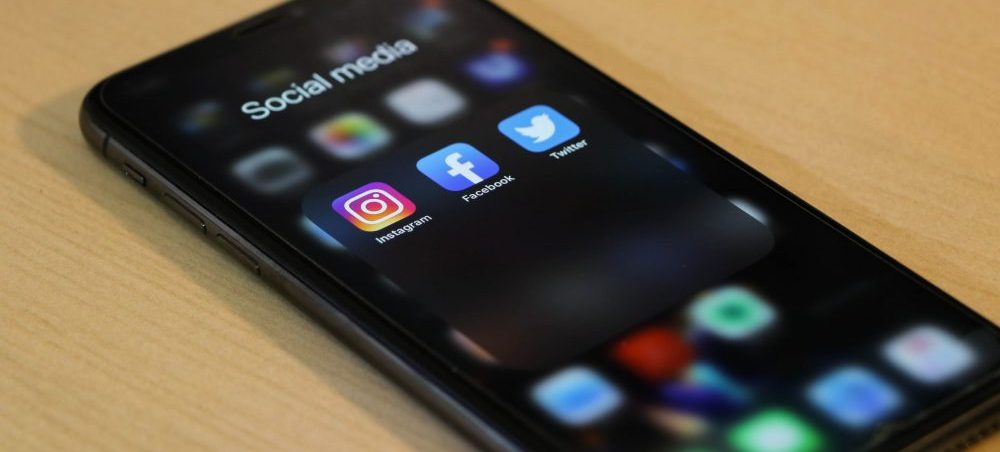Odds are, your B2B customers are on social media. Here’s how paid social ads can help you connect with them.
Here, you’ll find:
- How paid social media marketing can benefit B2B companies
- Which social media channels are worth your attention
- The latest marketing tactics to employ for B2B paid social media
- A breakdown of best practices on various platforms
When it comes to social media marketing (SMM), the hype doesn’t stop at the B2C level.
In fact, more than three-fourths (77%) of B2B marketers reportedly use paid B2B social media ads and promoted posts, making it one of the most effective tactics to have in your digital marketing arsenal.
B2B paid social media advertising can be an excellent lead generation and conversion strategy. Its ability to reach a target audience and point them in the right direction is highly advanced — and often underestimated.
Why you should consider B2B paid social media marketing
While many B2B marketers are familiar with the staggering popularity of social media, they tend to focus on other strategies first.
It makes sense: Social media platforms once had a reputation for being places where people come solely for entertainment.
Another myth many buy into is that it takes forever to achieve significant results with social media advertising.
In reality, organic social media posting does take a decent amount of time and effort to show results. And marketers at B2B companies may not have enough time, resources, and patience to achieve the desired outcome.
Plus, organic B2B social media posts typically only reach people already following you, if that. (Thanks a lot, shadow banning.) As a result, the number of people outside your existing network likely to see your content is very limited.
This makes organic B2B social media content a great strategy for growing customer trust and loyalty or spreading the word about new offers to existing customers and others likely to be interested in your products and services.
However, being limited to your existing social media audience also makes organic social posts not-so-great for brand awareness and growing your following on its own. It can also be hard to know exactly how well it’s working without the benefit of detailed analytics. That’s where B2B social media ads come in.
Paid social advertising can achieve faster and more substantial results than organic posting, which is exactly what B2B companies (and everyone else) usually want. However, the ideal strategy if you really want results requires using both in tandem.
For B2B companies, LinkedIn is widely considered to be the useful social media channel. (Image: Rawpixel)
Top 4 paid social media channels to consider
Experience tells us it’s wise to use as many channels as possible when you’re first experimenting with B2B paid social as part of your marketing strategy. That way, you can see which posts and platforms resonate most with your audience and choose the best one to put more effort into.
However, we also know there’s a limit to how much you can stretch a marketing budget. These are the main B2B social media platforms your brand can start exploring:
1. LinkedIn
For B2B companies, LinkedIn is widely considered to be the most useful social media channel. In fact, 93% of B2B marketers reportedly use it for their organic B2B social media content, with 77% ranking it as the best of the bunch.
Plus, three-fourths (75%) use LinkedIn for B2B paid social ads with 79% saying this social network produces the best results. LinkedIn ad options include sponsored posts, sponsored InMail, and pay-per-click (PPC) text ads.
The platform also offers a variety of extensive targeting tools for reaching your ideal audience. Using this business-oriented social platform for B2B social media content and targeting only the users in your demographics is such a wildly successful strategy that approximately 80% of B2B leads come from LinkedIn.
Feedzai came to HawkSEM for help with lead generation and growing their awareness, specifically via LinkedIn for time-sensitive campaigns such as a webinar or newly published article. We helped them increase click-through rates to 28% higher than the average LinkedIn CTR and launch a video campaign that received more than 419,000 views. Here’s how we did it.
2. Facebook & Instagram
Since they’re owned by the same company, marketers can create and manage both Facebook and Instagram ads from one convenient platform. Not only that, but as long as you’re following best practices for each social network, you can post the same ads to both platforms with a single click.
The proof is in the data: Facebook is reportedly used by 79% of B2B marketers (60% for Instagram).
While having immense outreach, it’s nearly impossible to get significant traction from organic posts on Facebook. Unsurprisingly, Facebook offers paid ad options, as does Instagram, most of which are relatively cost-efficient. You can set a specific budget for running ads and promoting certain posts.
Even though this platform doesn’t have as many laser-focused targeting capabilities as LinkedIn, the nearly 3 billion active monthly Facebook users alone make it a channel certainly worth considering.
3. Twitter
Twitter can be a highly productive social media channel when it comes to B2B marketing — so much so that 60% of B2B marketers use it. Not only does it have hundreds of millions of users (229 million) but it’s also the third most-used platform for content marketing purposes.
Twitter is also an excellent place for real-time interactions with clients to educate them about your products. The platform provides numerous opportunities for paid promotion of your tweets and accounts, and strategically leveraging hashtags can increase your exposure that much more.
4. YouTube
Today, YouTube is much more than a video-sharing channel. Believe it or not, it’s the second most popular website in the world, and over half of all B2B marketers (55%) use it.
This video platform’s popularity, helpful features, and ad options make it a top contender when you’re considering B2B paid social. YouTube boasts a variety of ad options, including:
- Unskippable pre-roll ads
- Trueview ads (which can be in-stream or video discovery ads)
- Display ads
- Bumper ads
You can promote both your videos and products through ads.
Pro tip: For B2B e-commerce brands, you can leverage video action campaigns (formerly called Trueview for Shopping). These ads offer a virtual storefront showing viewers shoppable product images links to product pages on your website.

Facebook determines how relevant your ads are to the audience you’re trying to reach. (Image: Unsplash)
Paid social media advertising tactics for successful B2B marketing
Because social media apps evolve and update so regularly (and quickly), so too do the best practices for B2B paid social media advertising.
As these platforms add new functionalities, incorporating them into your strategy in a timely manner will ensure you stay relevant and competitive. Here are some ways to do just that.
1. Target group members on LinkedIn
To generate the highest quality leads, pay special attention to LinkedIn Groups when selecting targeting options. The platform describes their groups as “a place for professionals in the same industry or with similar interests to share their insights and experiences, ask for guidance, and build valuable connections.”
People are likely to join the group only if they are explicitly interested in the topic, and you can advertise to group members while being fairly certain you’re reaching the right audience. To find relevant groups, simply type the keywords into LinkedIn’s “what group you want to target” section.
Pro tip: When targeting on LinkedIn, don’t forget to exclude competitors.
2. Explore promoting posts over text ads
When it comes to B2B paid social media marketing, most platforms tend to give more attention to promoting posts, accounts, and channels over text ads. Promoted posts usually stand out better and fit organically into the users’ feed as well.
If you’re on a tight budget, leave the text for PPC ads. If not, you can use both text ads and post, channel, or account promotion on social media. Of course, that means you have to make sure your social media content is high-quality, which is also beneficial for your organic SMM efforts.
3. Mind your Facebook Ad Relevance Score
Facebook determines how relevant your ads are to the audience you’re trying to reach. The more relevant the ad is, the better chance it has of showing up in the right place at the right time.
Use the Ad Relevance Score to find out how well you’re doing when it comes to relevancy. While relevance isn’t necessarily the key indicator of an ad’s performance, it can help you increase the overall ROI of your social media campaign.
Pro tip: Not only is TikTok fast-becoming a popular search engine in its own right, but ads on this platform are seeing sizable results. Research to see if your target audience is using this platform and what B2B success looks like here. After that, you can consider creating some organic and paid content, then monitoring metrics to see what resonates.
4. Leverage lead generation forms
Lead form ads are designed to collect information from the target audience, offer deals or promotions, and manage inquiries from potential customers.
By properly designing a lead form ad on platforms like Facebook and LinkedIn, you can collect valuable data and metrics not just from your current audience, but from lookalike audiences as well.
Pro tip: When uploading your CRM data to Facebook to find your clients on the platform and create lookalike audiences, don’t be taken aback by a low list match rate. Matching emails to accounts can be tough, since people usually use personal emails to sign up for social media.
5. Use website demographics on LinkedIn
Because of the high success rate many marketers see, paid advertising on LinkedIn is often more expensive than on other platforms. But don’t panic: There are things you can do to cut costs.
First, focus on analytics. Luckily, LinkedIn allows you to monitor who is interacting with your ads.
With Website Demographics, you can also check job titles, employers or companies, and industries of ad viewers to adjust your paid marketing campaign accordingly.
6. Explore social media influencers
Influencer marketing isn’t just a B2C endeavor. This can also be an effective marketing tactic for B2B buyers and other decision makers you want to target (or retarget).
In fact, 86% of B2B brands find success with influencer marketing, according to Search Engine Journal. And Bloomberg reports that, “While channels for B2B marketing can include anything from in-person appearances at conferences to Twitter posts, the key forum is LinkedIn.“
Influencers can provide a dose of third-party credibility and social proof that can help, well, influence your audience in a way that a first-party ad just can’t.
When exploring an influencer marketing partnership, we recommend:
- Mapping out your plan and goals
- Conducting research to identify the top influencers in your industry
- Determining which kind of influencer you want (this will depend on your goals and budget)
- Having an idea about the content type you’re looking for
- Aligning with the influencer on details and expectations
- Optimizing all of your brand’s social profiles
- Reviewing campaign performance to see if this ad type works for you
The takeaway
Paid social media advertising can be a highly useful marketing tool for your B2B brand. The ability to reach a wide audience coupled with an impressive variety of targeting options can help you improve marketing efforts substantially.
Once you’ve seen success on a platform or two, you can put more effort into those B2B social media marketing ads and conduct tests to help you optimize your social media strategy accordingly.
This article has been updated and was originally published in September 2020.

